- Using PVAAS for a Purpose
- Key Concepts
- PEERS
- About PEERS
- Understanding the PEERS pages
- Evaluation List
- Evaluation Summary
- Evaluation Forms
- Add Educator
- Add Evaluator
- Manage Access
- Add a school-level Educator to PEERS
- Add a district-level Educator to PEERS
- Add the Evaluator permission to a user's account
- Remove the Evaluator permission from a district user's account
- Add the Evaluator or Administrative Evaluator permission to a district user's account
- Remove the Administrative Evaluator permission from a district user's account
- Remove an Educator from PEERS
- Restore a removed Educator
- Assign an Educator to a district-level Evaluator
- Assign an Educator to an Evaluator
- Unassign an Educator from an Evaluator
- Assign an Educator to a school
- Unassign an Educator from a school
- Link a PVAAS account to an Educator
- Working with Evaluations
- Switch between Educator and Evaluator
- View an evaluation
- Use filters to display only certain evaluations
- Print the Summary section of an evaluation
- Understanding evaluation statuses
- Determine whether other evaluators have access to an evaluation
- Lock or unlock an evaluation
- Save your changes
- Mark an evaluation as Ready for Conference
- Release one or more evaluations
- Download data from released evaluations to XLSX
- Make changes to an evaluation marked Ready for Conference
- Reports
- School Reports
- LEA/District Reports
- Teacher Reports
- Comparison Reports
- Human Capital Retention Dashboard
- Roster Verification (RV)
- Getting Started
- All Actions by Role
- All Actions for Teachers
- All Actions for School Administrators or Roster Approvers
- Manage teachers' access to RV
- Assign other school users the Roster Approver permission
- View a teacher's rosters
- Take control of a teacher's rosters
- Add and remove rosters for a teacher
- Copy a roster
- Apply a percentage of instructional time to every student on a roster
- Batch print overclaimed and underclaimed students
- Remove students from a roster
- Add a student to a roster
- Return a teacher's rosters to the teacher
- Approve a teacher's rosters
- Submit your school's rosters to the district
- All Actions for district admin or district roster approvers
- Assign other LEA/district users the Roster Approver permission
- Take control of a school's rosters
- View a teacher's rosters
- View the history of a teacher's rosters
- Edit a teacher's rosters
- Add and remove rosters for a teacher
- Copy a roster
- Apply a percentage of instructional time to every student on a roster
- Batch print overclaimed and underclaimed students
- Return a school's rosters to the school
- Approve rosters that you have verified
- Submit your district's rosters
- Understanding the RV Pages
- Viewing the History of Actions on Rosters
- Additional Resources
- Admin Help
- General Help
LEA/District Diagnostic | 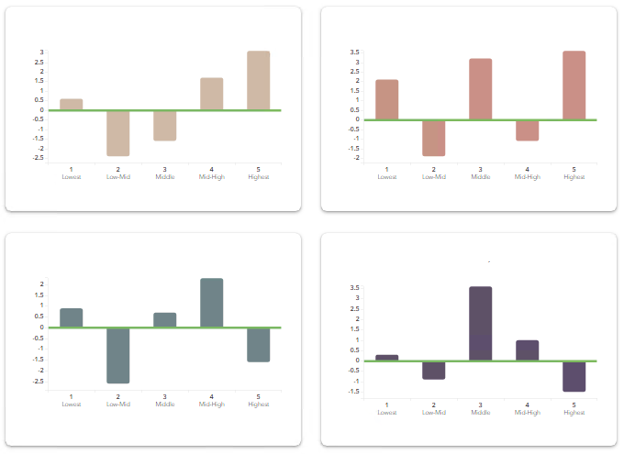 |
Interpreting Common Patterns
Rather than focusing on changes for one student group, it's important to reflect on the overall patterns of growth across multiple student groups. Analyzing positive and negative patterns of growth across student groups can help you understand how to meet students' needs. The following examples illustrate patterns that are common in diagnostic reports.
Pattern 1: Downhill Pattern
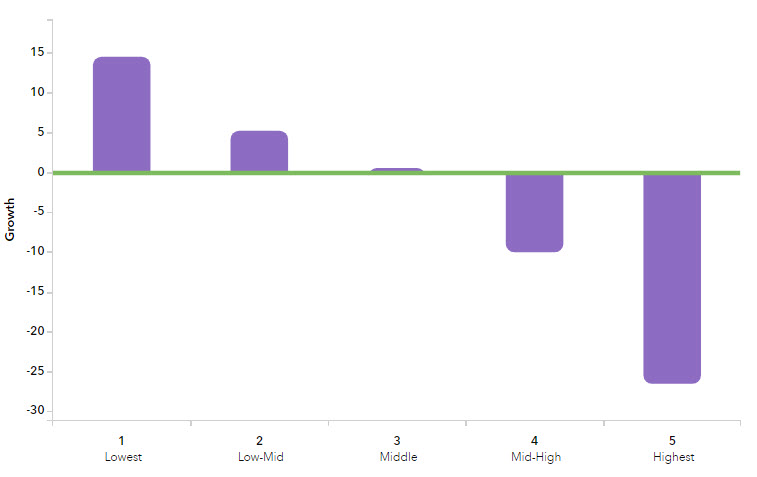
The downhill pattern occurs when the instructional program benefits lower-achieving students more than their higher-achieving peers. This pattern might occur in a LEA/district where accountability is a primary concern. That concern can lead teachers and admins to focus more heavily on meeting the needs of low-achieving students who are not yet proficient.
As a result, high-achieving students do not meet thethe growth standard and lose ground academically. If the program continues to produce these results, there might be fewer high-achieving students in later grades.
Pattern 2: Uphill Pattern
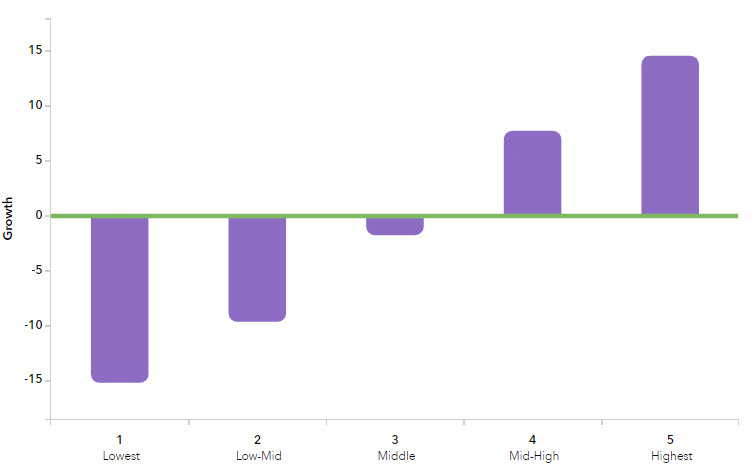
The uphill pattern occurs when the instructional program benefits higher-achieving students more than their lower-achieving peers. This pattern might occur if a LEA/district shifts the program toward a stronger emphasis on academic rigor without effectively differentiating the instruction for lower-achieving students. This pattern often results in a widening of the achievement gap.
Pattern 3: Tent Pattern
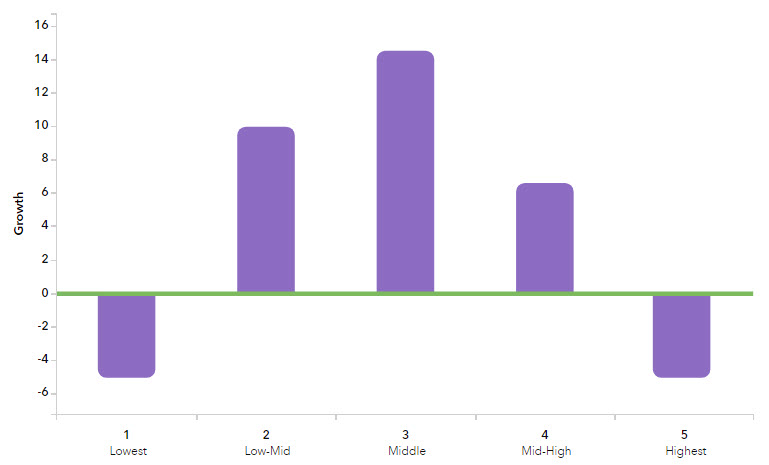
The tent pattern occurs when the instructional program most benefits students in the middle of the achievement range, without appropriately addressing the needs of students on the higher and lower ends of the range. Teachers and admins should consider how to broaden the curricular focus, offer effective supports and interventions for low-achieving students, and provide opportunities for high achievers.
Pattern 4: V Pattern
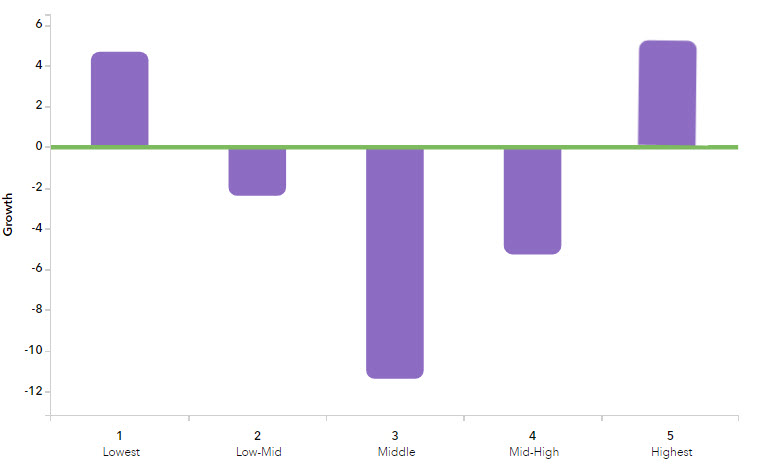
In the V pattern, only the lowest-achieving and highest-achieving students exceeded the growth standard, but students in the middle groups have not had sufficient opportunities to make progress. This pattern might occur when instruction focuses on providing the lowest-achieving students with support services, while challenging the highest-achieving students with advanced courses or programs.
Pattern 5: Opportunity Gap Pattern
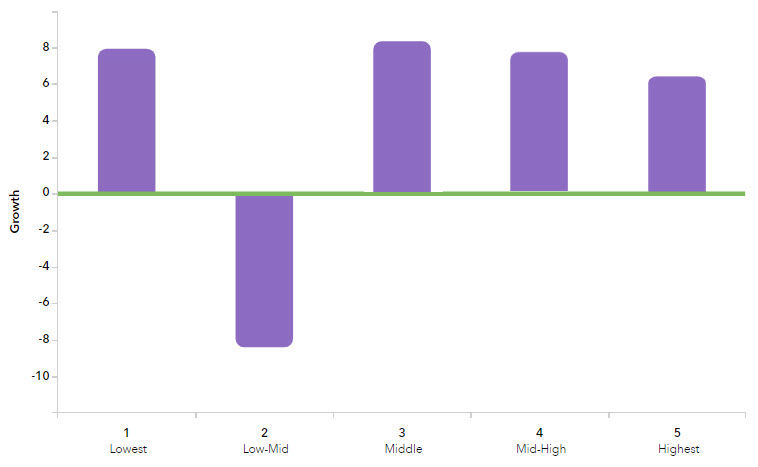
The opportunity gap pattern occurs when students at all achievement levels make noticeable growth except for students in the second achievement group. This pattern might occur when classroom instruction is aimed at students who are at least average in achievement, while the lowest-achieving students benefit from additional services and interventions. Students in the second achievement group might lose ground if they are not provided with additional services or if their academic needs are not addressed through differentiated instruction in the classroom.
Pattern 6: Desirable Pattern
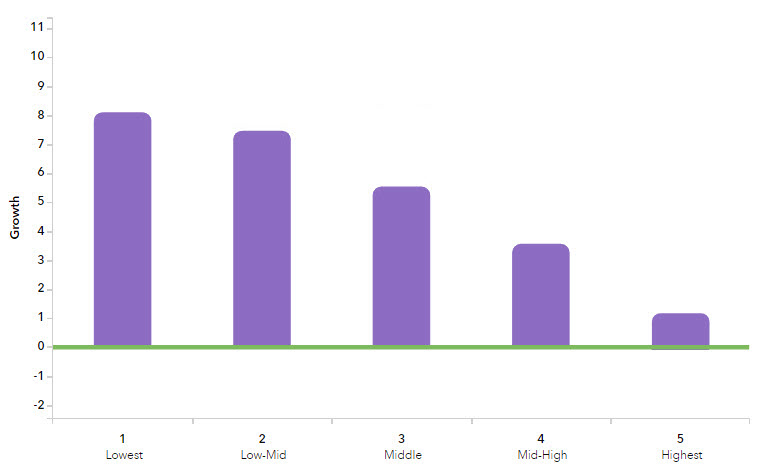
The desirable pattern occurs when students at all achievement levels meet or exceed the growth standard. Over time, you may find that this pattern shows students have the potential to close the achievement gap without inhibiting the growth of high-achieving students.
More Information
Diagnostic and Projection Summary Reports: Using Together for Decision Making